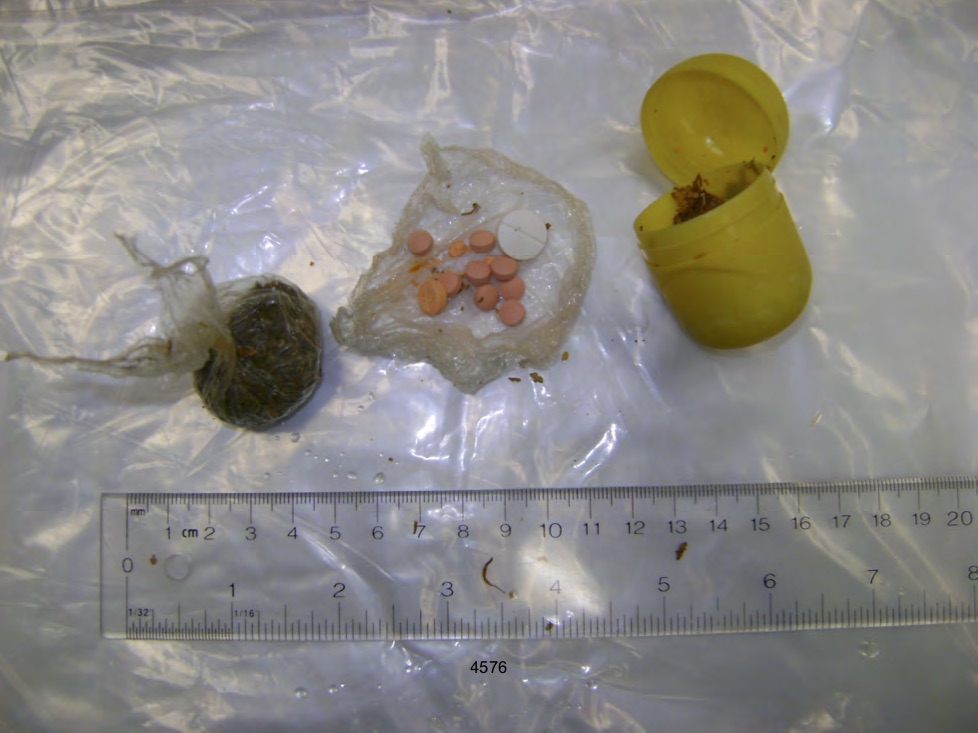A case-by-case examination of eight inmate deaths at the Barton Street jail continued at a coroner’s inquest on Wednesday, with testimony from Sgt. Jeffery White about the flow of contraband drugs and how correctional staff go about looking for them.

There are many ways drugs could “theoretically” get into the jail, he told the inquest. It could happen through staff, volunteers, through deliveries or an inmate’s body cavities. One challenge embedded in search protocol is that it involves five correctional officers, he said.
Two handle strip searches, while three go cell by cell. Their very presence, White testified, often tips off inmates, who then find “inventive” ways to hide contraband, such as pills.
White’s testimony comes as part of a look at 40-year-old Louis Unelli’s death on March 17, 2012. He was acting sergeant at the time and involved in an area search on March 18, 2012.
An agreed statement of facts, put before the jury, shows that an item known as a “fishing line” was recovered during that search. Hamilton police Sgt. Jennifer McFeggan, was one of several witnesses to say her understanding is that it’s used to move narcotics or fish them out of vents.
A Kinder egg with what appeared to contain marijuana had been found the day before, she said, as well as several pills.
Counsel to the coroner, Karen Shea, asked White if the full-body X-ray scanners, that have been added to the detention centre in recent years could be used as part of a critical incident search involving inmates following an overdose death.
- ‘Shock and disbelief’ after Manitoba school trustee’s Indigenous comments
- Canadian man dies during Texas Ironman event. His widow wants answers as to why
- Several baby products have been recalled by Health Canada. Here’s the list
- ‘Sciatica was gone’: hospital performs robot-assisted spinal surgery in Canadian first
A good idea, he said, but “feasibility is the toughest thing,” pointing to staffing and how the movement of that many inmates would affect the institution as a whole.
‘Code White’ during labour disruption
The inquest started to hear evidence pertaining to 42-year-old William Acheson on Wednesday. He was found unresponsive at the Barton Street jail on Sept. 12, 2012, the same day a five-week labour disruption was concluding, according to an agreed statement of facts.
The jury has heard from several of the managers from other institutions and provincial agencies that filled in during that period and on that day.
Bob Feere, a former probations officer, now on the management side said he volunteered. “It wasn’t business as usual,” he said, adding that those working tried to keep the normal schedule.
He was assisting with meal delivery, alongside Richard Austin, also a fill-in, when they observed Acheson on the floor of his cell. Feere said he noticed Acheson’s jaw was slack and called a “code white.” The response from medical staff was “phenomenal,” he said.
He told the jury that he stepped aside — that his work on the community side did not involve AED training.
Both Feere and Austin, a former correctional officer, said there was limited orientation.
In a similar circumstance, Feere said it would be useful to be paired with someone who knows the institution, including the layout. In the event of a “code white” during a labour disruption, “standardized training wouldn’t be a bad idea,” he said.








Comments